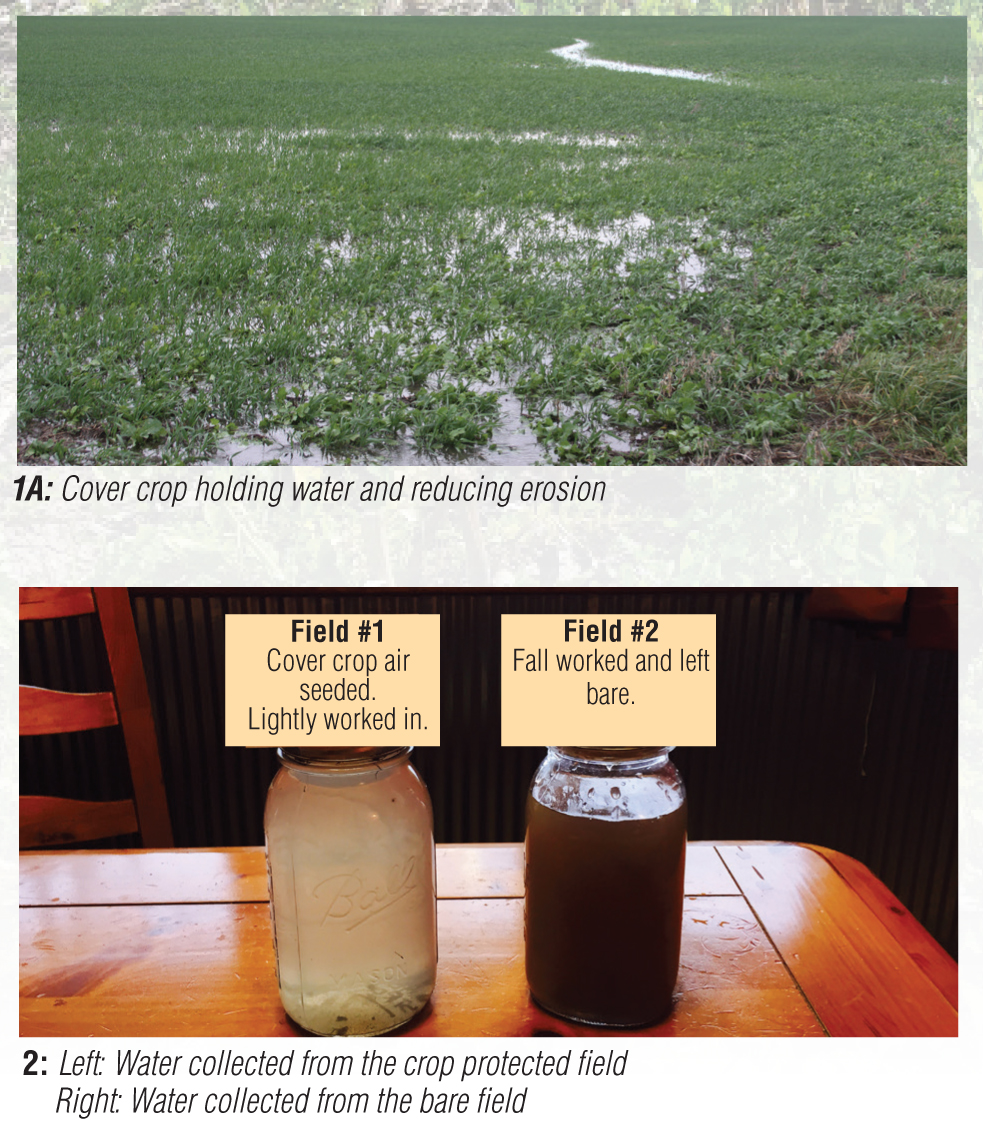Benefits of cover crops
Improve yields by enhancing soil health
Cover crops have the power to improve crop yields by enhancing overall soil health. The roots from cover crops improve soil tilth and the decomposing plant material increases soil organic matter. Specific cover crops like brassica produce a large, deep root that can generate pressure up to 240 pounds per square inch to break up compacted soil. Living cover crops interact with soil biology to create aggregates that build soil structure. This improves soil permeability, aeration, water infiltration and holding capacity, and ease of crop emergence and root growth.
Cut fertilizer costs
Cover crops can contribute to overall soil fertility by adding nutrients to the soil as they decompose. Cover crops can fix unused nutrients that might otherwise run off, such as nitrogen and phosphorus. By fixing these nutrients in the cover crop and soil organic matter, they are less likely to run off and are more available for the next commercial crop. Nitrogen fixing cover crops can be a great benefit to commercial crops such as corn. These cover crops can even be inter-seeded between established corn rows to add atmospheric nitrogen to the soil in season.
Better weed control
Cover crops can improve the effect of herbicides by out competing weeds for light, moisture, nutrients and space. Cover crop mulch that is covering the ground, and decomposing while the commercial crop is getting established, can effectively smother weeds trying to grow between the seed rows. Some cover crop varieties also release compounds that can chemically inhibit weed growth, leading to increased yields.
Prevent soil erosion and protect water quality
By providing ground cover in the off times of the growing season, cover crops provide a natural barrier to wind and water erosion. The standing cover crop shields the soil from the impact of rain drops while the crop’s root systems anchor the soil to prevent wind and water erosion. This not only keeps soil in place in highly erodible ground, but also fixes the nutrients and organic matter contained in the soil.
Conserve soil moisture
An inter-seeded cover crop can potentially compete with an established commercial crop for soil moisture. However, rotated cover crops and even an inter-seeded cover crop help the soil hold more moisture by preventing water runoff, increasing the soil’s moisture storage capacity by improving soil structure and adding organic matter, and reducing moisture evaporation by shading the soil surface from the sun’s rays.
Possible feed source
Cover crops can provide a feed source for producers that have livestock or have a secondary market for forage. The cover crop can be grazed or harvested and still provide erosion control by maintaining the cover crops root mass. However, many of the nutrients stored in the cover crop will be lost when the above ground portion of the plant is harvested.
Hail Damage
Hail damage is always bad and if the timing does not allow you to replant a cash crop, cover crops provide you with an opportunity to add diversity, suppress weeds, provide supplement grazing and capture and cycle nutrients.














